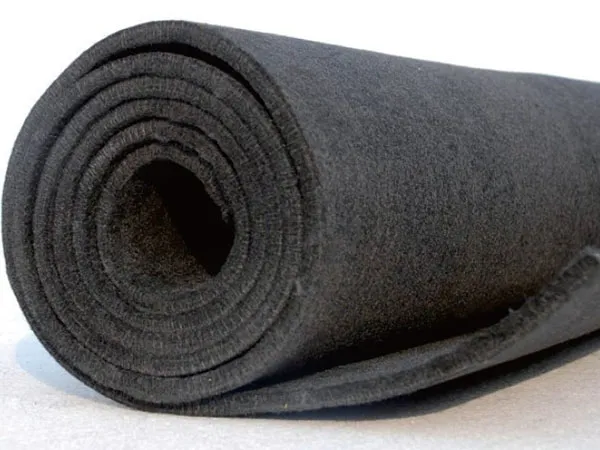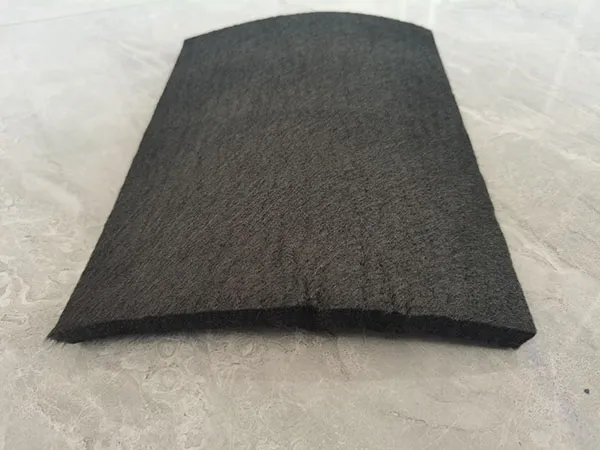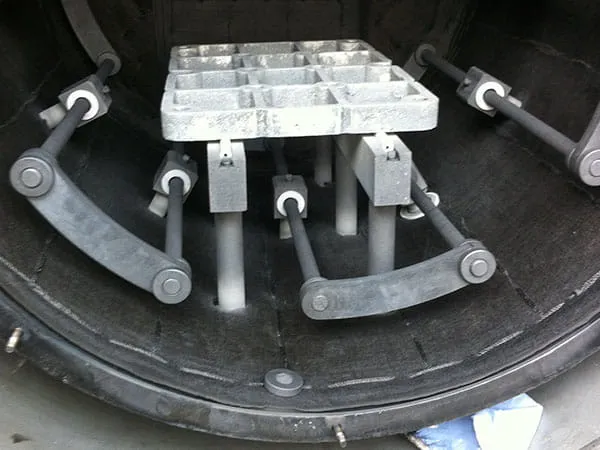Time: 2025-07-28 01:59:05 Source: Cangzhou Carbon Technology Co., Ltd.
Graphite felt is a widely used and highly effective insulation material in vacuum furnaces, particularly for high-temperature applications. Here's a breakdown of its characteristics, advantages, and considerations.
Graphite felt is a fibrous material made from carbon fibers that have been subjected to high-temperature graphitization processes. It can be manufactured from various precursor materials like polyacrylonitrile (PAN) or rayon. The "felt" structure, often needle-punched, gives it a low density and high porosity, which are crucial for its insulating properties. There are typically two forms:
Soft Graphite Felt: Flexible and can be shaped around furnace walls.
Rigid Graphite Felt (or cured graphite felt): Made by impregnating soft felt with resin, then curing and graphitizing it to create self-supporting shapes.

Graphite felt excels as insulation in vacuum furnaces due to several key properties:
Excellent Thermal Insulation: Its low density and porous, fibrous structure create numerous small air gaps (or vacuum gaps in a vacuum furnace) that significantly impede heat transfer by conduction. This results in very low thermal conductivity, especially at high temperatures. Compared to graphite board, graphite felt has significantly lower thermal conductivity, leading to less heat loss.
High-Temperature Stability: Graphite is an allotrope of carbon, and in a vacuum or inert atmosphere, it can withstand extremely high temperatures (up to 3000°C or even higher) without melting or significant degradation. It even exhibits an increase in strength as temperatures rise.
Low Thermal Mass: Its lightweight nature means it absorbs less heat, allowing the furnace to reach operating temperatures faster and cool down more quickly, contributing to energy efficiency and shorter cycle times.
Good Thermal Shock Resistance: Graphite felt can withstand rapid temperature changes without cracking or deforming, maintaining its structural integrity in demanding furnace environments.
Chemical Inertness: In non-oxidizing atmospheres (vacuum or inert gas), graphite is highly resistant to many chemicals and corrosive media, which is crucial in preventing contamination of processed materials.
Ease of Maintenance and Installation: Soft graphite felt is relatively easy to cut, shape, and replace, making repairs and modifications simpler compared to rigid board materials. It can also be maneuvered around mounting points and nozzles.

Energy Efficiency: Low thermal conductivity minimizes heat loss, reducing energy consumption and operating costs.
Faster Cycle Times: Low thermal mass allows for quicker heating and cooling, improving productivity.
Temperature Uniformity: Helps in maintaining a stable and uniform temperature distribution within the hot zone.
Cleanliness: High purity graphite felt helps prevent contamination of sensitive materials being processed.
Durability in Non-Oxidizing Environments: Excellent resistance to high temperatures and chemical corrosion in vacuum or inert gas atmospheres.
Flexibility (Soft Felt): Can be easily tailored to various furnace geometries.
Ease of Repair: Damaged sections can often be cut out and replaced with minimal effort.
Oxidation in Presence of Oxygen: Graphite oxidizes when exposed to air at elevated temperatures (typically above 400°C). Therefore, graphite felt is exclusively used in vacuum or inert gas furnaces. In applications where oxygen might be present, protective coatings or an all-metal hot zone would be necessary.
Brittleness (Rigid Felt): While soft felt is flexible, rigid graphite felt can be brittle and susceptible to cracking under mechanical stress.
Cost: High-quality graphite felt can be more expensive than some alternative insulation materials.
Dusting: Some types of felt may shed fibers, which can be a concern for sensitive applications. Manufacturers often offer options with surface treatments or a protective hot face (like carbon-carbon sheet) to mitigate this.
Limited Mechanical Strength (especially soft felt): While good for insulation, it's not a structural material on its own and requires support within the furnace.

Graphite felt is a superior choice for insulation in vacuum furnaces, especially for high-temperature processes. Its exceptional thermal properties, combined with its stability and ease of handling in non-oxidizing environments, make it a critical component for achieving energy efficiency, precise temperature control, and high-quality results in demanding applications. The trend in vacuum furnace design is increasingly moving towards all-felt insulation hot zones due to its superior performance compared to traditional board-and-felt combinations.